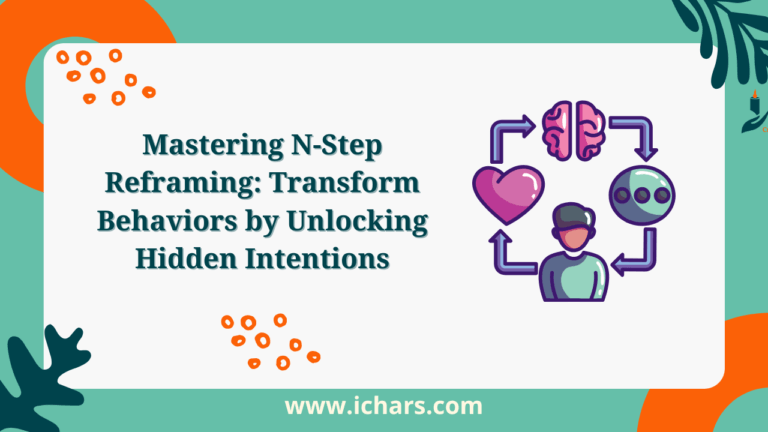Understanding the Psychology Behind Change
As psychologists, we understand that behaviors, even those that seem destructive or irrational, often serve a deeper purpose. These subconscious motivations, or positive intentions, are the mind’s way of meeting fundamental needs.
But what if we could not only identify these needs but also guide our clients to meet them in healthier, more constructive ways?
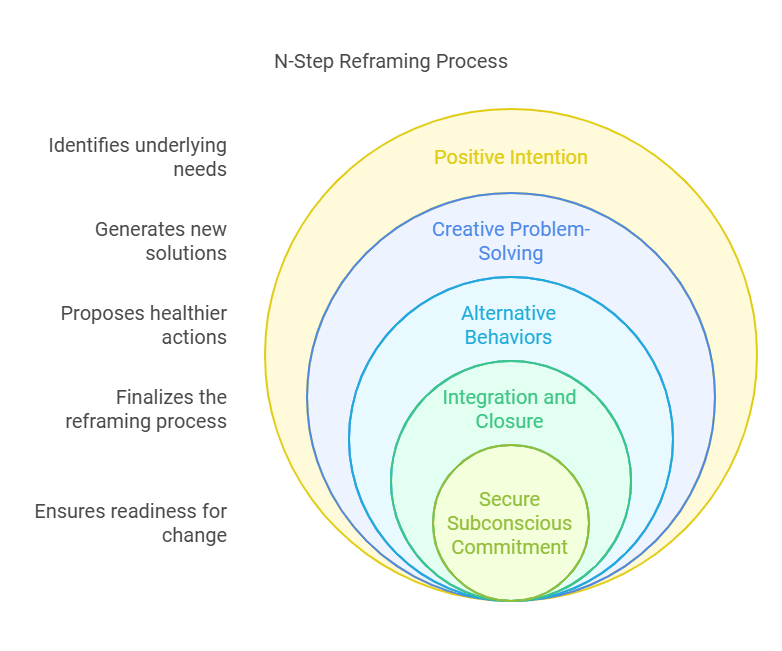
This is the power of N-Step Reframing, a transformative NLP technique that integrates subconscious alignment and conscious goal-setting.
This comprehensive article delves deep into the science, methodology, and application of N-Step Reframing, equipping you with insights to elevate your therapeutic practice.
The Neuroscience of Positive Intention
Secondary Gains: The Subconscious Rewards of Dysfunctional Behaviors
At the heart of many entrenched patterns lies a hidden positive intention, often referred to as a secondary gain. For example:
- Procrastination: Protects from the fear of failure or judgment.
- Overeating: Acts as a coping mechanism for emotional stress.
- Chronic anger: Provides a sense of control in chaotic environments.
The brain’s reward system reinforces these behaviors by releasing dopamine, even when the actions ultimately harm well-being. This creates a feedback loop that is difficult to break without addressing the underlying intention.
How N-Step Reframing Works with the Brain
N-Step Reframing leverages the brain’s neuroplasticity, guiding clients to:
- Recognize the subconscious motivations behind their behaviors.
- Create new neural pathways for healthier alternatives.
- Foster harmony between the conscious and subconscious mind.
What Is N-Step Reframing?
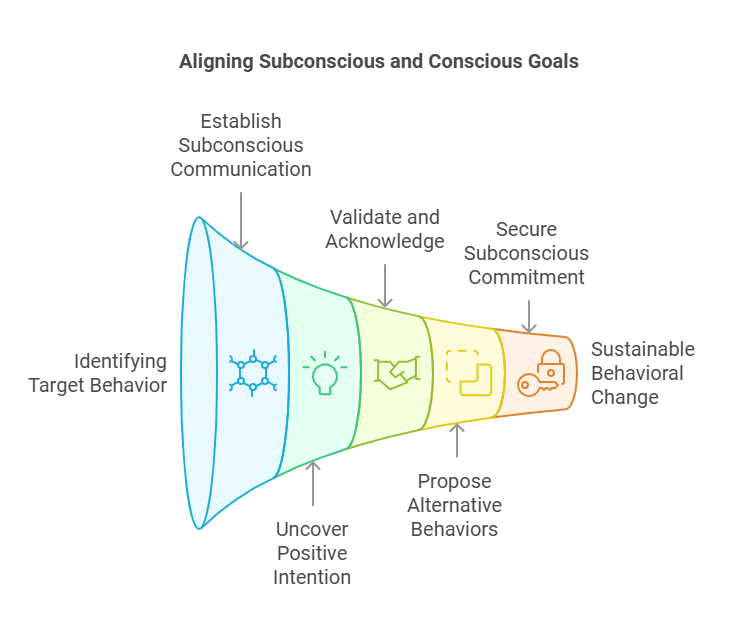
N-Step Reframing is a structured process rooted in NLP (Neuro-Linguistic Programming). It enables clients to uncover and validate the subconscious intentions behind their behaviors while replacing them with constructive alternatives.
This method is especially effective because it doesn’t suppress the behavior; instead, it aligns subconscious needs with conscious goals, ensuring sustainable change.
Advanced Guide to N-Step Reframing
Step 1: Pinpoint the Target Behavior
Identify the specific behavior your client wants to change. Clarity ensures the reframing process is focused and impactful.
Step 2: Establish Subconscious Communication
Use tools such as guided visualization, hypnosis, or mindfulness techniques to connect with the part of the subconscious responsible for the behavior. This step is crucial for accessing the deeper motivations.
Step 3: Uncover the Positive Intention
Encourage the subconscious part to share its purpose. Ask: “What is this behavior trying to achieve for you?” Common responses might include safety, validation, or emotional comfort.
Step 4: Validate and Acknowledge
Build rapport by affirming the subconscious intention. For example: “It makes sense that you want to ensure safety; thank you for trying to protect us.”
Step 5: Activate Creative Problem-Solving
Guide your client to tap into their creative resources to brainstorm healthier ways to fulfill the same intention. Techniques such as mind mapping or metaphor exploration can be particularly effective.
Step 6: Propose Alternative Behaviors
Collaboratively generate 3–4 actionable alternatives. These should be:
- Realistic
- Aligned with the client’s values
- Holistic in addressing their emotional and psychological needs
For example:
- Replace procrastination with structured planning sessions and rewards.
- Swap emotional eating with mindfulness exercises or engaging hobbies.
- Transform chronic anger into assertive communication practices.
Step 7: Conduct an Ecology Check
Examine whether the proposed alternatives align with the client’s overall goals and well-being. Address potential conflicts to ensure the changes are harmonious.
Step 8: Secure Subconscious Commitment
Ask the subconscious part to agree to adopt the new behaviors. This agreement signifies a pivotal shift in the client’s internal dynamics.
Step 9: Integrate and Close
Express gratitude to the subconscious parts involved. Guide the client back to full awareness, empowered with clarity and actionable strategies.
Case Study: N-Step Reframing in Action
The Challenge
A client struggling with chronic procrastination was unable to meet deadlines, leading to stress and self-criticism. Despite their desire to change, they felt stuck.
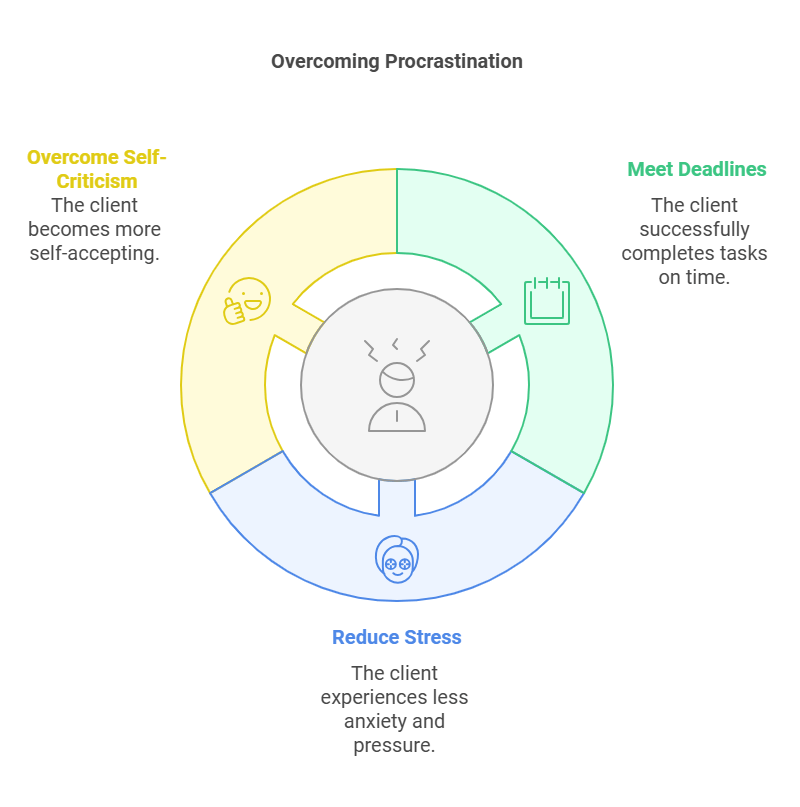
The Process
Using N-Step Reframing, we:
- Identified that procrastination shielded them from the fear of failure.
- Validated this intention and explored alternatives.
- Developed a structured schedule with self-compassionate checkpoints.
- Conducted an ecology check to ensure alignment with their long-term goals.
The Outcome
Within weeks, the client reported improved productivity, reduced stress, and a newfound sense of control over their time.
Applications Beyond Therapy
N-Step Reframing is versatile, with applications in:
- Leadership Coaching: Resolve internal conflicts hindering decision-making.
- Educational Settings: Help students overcome anxiety or performance blocks.
- Corporate Training: Address workplace behaviors like avoidance or overworking.
How N-Step Reframing Enhances Therapeutic Practice
- Deepens Client Engagement: By addressing subconscious motivations, clients feel heard and understood, fostering trust and cooperation.
- Reduces Resistance: Validating positive intentions diffuses defensiveness, making clients more receptive to change.
- Ensures Lasting Transformation: Aligning subconscious and conscious goals creates sustainable behavioral shifts.
Learn and Master Advanced Techniques
N-Step Reframing is just one tool in a psychologist’s arsenal. For those eager to deepen their practice, our Cognitive Hypnotic Psychotherapy Diploma offers:
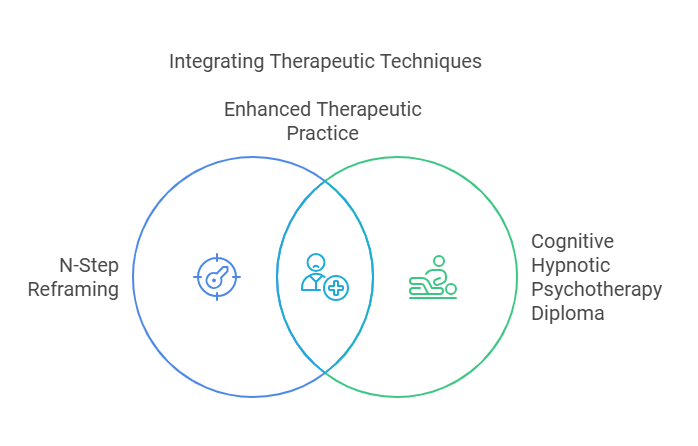
- A blend of NLP, clinical hypnosis, and advanced therapeutic methods.
- Over 40 transformative techniques, including Timeline Therapy, Anchoring, and Metaphor Therapy.
- A holistic framework for addressing complex emotional and behavioral challenges.
This program equips you to facilitate profound, life-changing results for your clients.
Your Next Step
Are you ready to elevate your therapeutic practice? Explore our Cognitive Hypnotic Psychotherapy Diploma and unlock the tools to transform lives.
- Enjoyed this article? Share it with your peers to spread these powerful insights.
- Want to learn more? Discover our programs and take your expertise to the next level.
